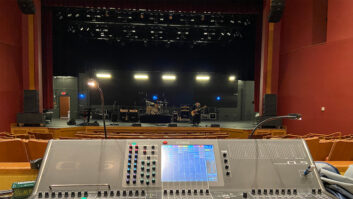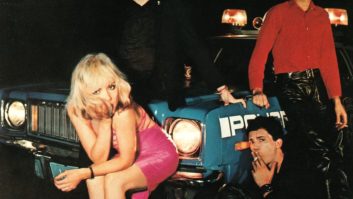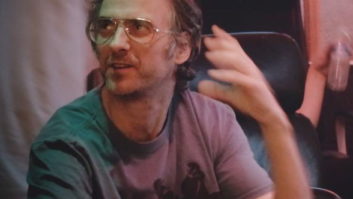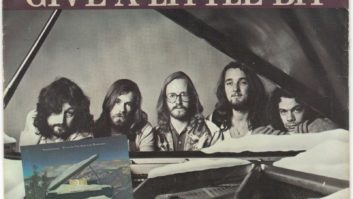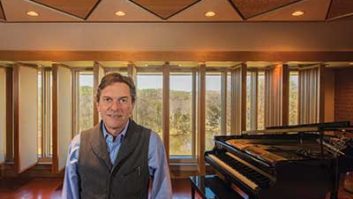Walking into Dave Kershaw’s project studio, The Glass Elevator, is a bit like walking onto an Austin Powers set: colorful surroundings and an assortment of kitschy, retro collectibles including lava lamps, groovy telephones and vintage furniture. Go a little further into his candlelit, incense-infused domain and you discover some serious gear that would have most project studio owners licking their chops.
“I got in just slightly before old gear and microphones were becoming popular,” explains Kershaw over a cup of ginger tea. “I got some of the stuff at a really good deal and then, boom, in the early ’90s everyone caught on, and the prices went way up. I spent six years touring and recording with Sarah McLachlan as a keyboard player and acquired a lot of vintage tube gear and weird boxes wherever I went.” Included in his collection are racks of classic gear from Avalon, Tube-Tech and Amek, and a pair of treasured uREI 1176 black-face modules. Look around the Elevator (actually the basement in Kershaw’s Vancouver house; e-mail: [email protected]) and you’ll also find a room stuffed with more than a dozen keyboards, several old amplifiers and numerous guitars and basses.
A newly purchased Allen & Heath GS3000 analog console dominates the control-room space. Kershaw recorded several albums on the Mackie 32o8, then felt it was time for a change. “I’m a total Mackie fan,” he avows, “and I was quite interested in their digital board. But then I stumbled on the Allen & Heath board. I know it’s a catchphrase, but I really understand it now, that wonderful British EQ-very musical. I noticed right away the phase coherency of the console, that stereo feel. I recently decided to try recording a project with just the console’s mic preamps and EQ, and I was blown away. It sounded great, and there was plenty of headroom.”
Kershaw records onto ADAT XTs and then mixes to an Akai DR4 hard disk system, which allows him to achieve what he refers to as “poor-man’s automation.” “I can break a song down into several sections and mix from start to finish,” he explains. “I can get the intro done and then stop, rewind, have a little preroll, set up my faders for when the verse starts and then punch in on the hard disk, seamlessly. So I don’t have to freak out on the analog console to have all the moves down.”
When he realized that road life was no longer for him, Kershaw decided to devote more time to recording and producing bands and doing session work. In between music gigs, he pays the bills by working as a key grip on TV commercials, which gives him the freedom to work when he wants to. He has produced several local Vancouver acts, including Veal, Wild Strawberries, John Gogo and a solo project for Chin Injeti from Bass Is Base.
A self-confirmed knob twister and sonic explorer, Kershaw’s passion for sound traces back to his childhood. “When my father would buy a new piece of hi-fi gear,” he recalls, “I’d take it apart and try to modify it-twist knobs and do things like turn the bass all the way up. When I work with other engineers, they always laugh at me because I’ll just grab a knob and yank it all the way over, like a Spinal Tap sort of thing.”
Kershaw admits that wearing all of the hats in a project studio environment can be difficult. “As I get older,” he philosophizes, “I realize how tough it is being a producer, engineer, tape-op, the whole shebang. It is beautiful because you have this intimate relationship with the artist, but by the end of the day you’re really, really exhausted.”
As with many project studios, even the house itself is part of the Glass Elevator experience. In the summer months, people can get some fresh air in the back yard, and in the winter they can enjoy a spot of tea upstairs. The entire house is wired with mic outlets, so vocals (and occasionally upright bass and percussion) can be recorded upstairs by candlelight or with a quiet Presto log burning in the fireplace.
“The thing about a project studio is it’s nice to have musicians not feel under the gun,” concludes Kershaw. “After a while, they realize that they’re not worrying about the clock and sounds are getting to tape quite well. There’s nothing more rewarding for me than when an artist realizes that and begins to let go.”

